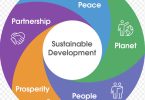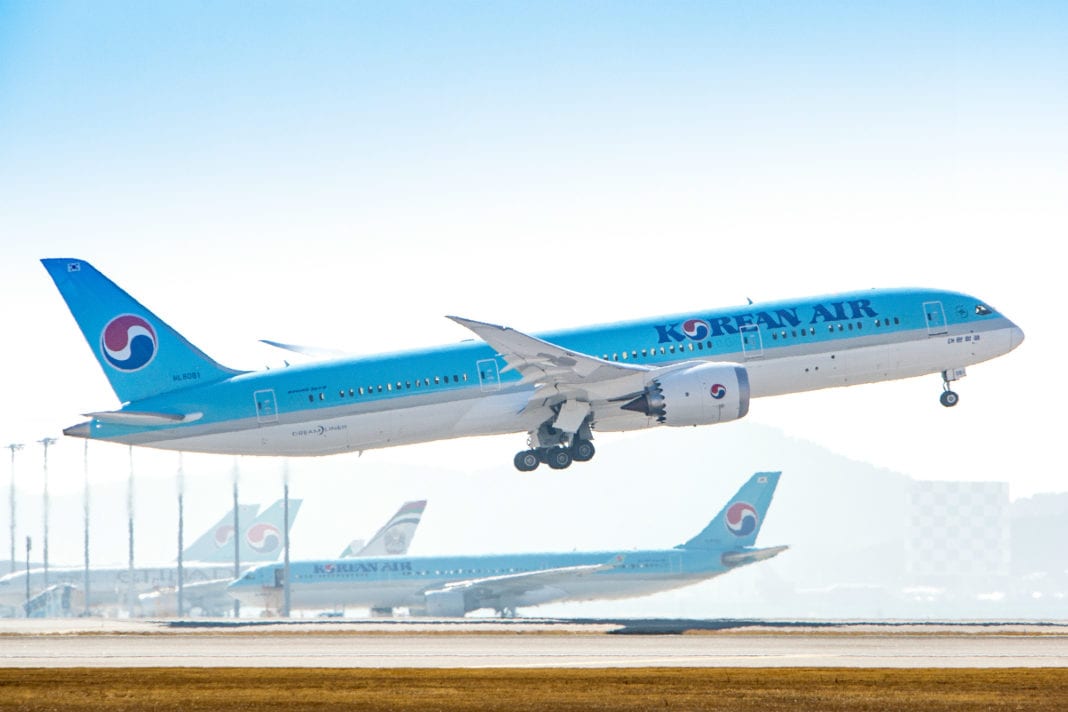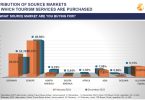Dubai has maintained its strong performance through 2017 and is on track for another record year in terms of tourist volumes, according to the latest data released by Dubai’s Department of Tourism and Commerce Marketing (Dubai Tourism). A total of 11.58 million international overnight visitors arrived in Dubai during the first nine months of 2017, reflecting a 7.5 percent increase over the same period last year, underlining the strength of the emirate’s tourism industry as well as the growing appeal of Dubai as a global tourism destination of choice.
India retained top spot on Dubai’s list of source markets for inbound tourism, with 1,478,000 Indian tourists arriving in the city between January and September, registering a significant 20 percent rise over the same period in 2016. This increase affirmed the effectiveness of various innovative promotional activities driven by Dubai Tourism in the market, including highly successful influencer-led collaborations with Bollywood superstar Shah Rukh Khan. Meanwhile, China stayed in fifth place with impressively large 49 percent year-on-year growth, delivering 573,000 visitors in the first nine months of the year and continuing to benefit from regulatory changes introduced in late 2016 granting Chinese citizens free visa-on-arrival access to the UAE.
Saudi Arabia and the UK also retained their positions as Dubai’s second and third largest feeder markets respectively. A total of 1,250,000 Saudis and 905,000 British travelers arrived in the emirate between January and September 2017, the former showing a slight drop compared to the first nine months of 2016, reflecting the ongoing economic challenges facing Saudi Arabia, while the UK witnessed a resilient 2 percent year-on-year increase despite continued Brexit instability. Almost all the top 10 markets – with the exception of Oman and Kuwait, which saw declines of 23 and 3 percent respectively – posted healthy increases in tourist traffic, including sixth-placed USA up 6 percent, seventh-placed Pakistan up 4 per cent, eighth-placed Iran up 16 percent and ninth-placed Germany up 6 percent.
Among the top 20 feeders of traffic, Russia topped the growth charts, posting an increase of 95 per cent and continuing the pronounced resurgence seen earlier in the year following the February introduction of UAE visa-on-arrival access for Russian citizens. Philippines in 11th position, France in 15th, Jordan in 17th and Lebanon in 19th also saw double-digit year-on-year increases of 10, 12, 18 and 15 percent respectively, with 13th-placed Egypt, 16th-placed Italy and 18th-placed Canada showing lower, yet stable increases at 2, 4 and 1 percent respectively. Only two markets – Australia and Bahrain – witnessed nominal declines of 2 percent each.
From a regional perspective, the GCC emerged as the largest contributor of overnight visitor volumes, with a 21 per cent share compared to second-placed Western Europe’s 20 percent. These were closely followed by South Asia with a share of 18 per cent, the MENA and North and South-East Asia regions with 11 per cent each, the Americas and the Russia, CIS and Eastern Europe bloc with 6 percent each, Africa with 5 per cent and Australasia with 2 percent. The wide geographical spread reflects Dubai’s diversified market strategy aimed at driving consideration from a broad spectrum of countries and visitor segments.
As Dubai continues to evolve and expand its offerings across all pillars of its destination proposition, these latest figures affirm the strength of the emirate’s tourism industry as well as the growing attractiveness of Dubai as a leisure and business destination. The performance in the first three quarters of 2017 indicates that the emirate is making sustained progress towards its Tourism Vision 2020 goals of welcoming 20 million visitors per year by 2020 and increasing the tourism sector’s contribution to GDP.
His Excellency Helal Saeed Almarri, Director General, Dubai Tourism, commented: “The sustained growth ahead of the global average that we have witnessed so far this year is indicative of the positive impact yielded by our consolidated strategy across regulatory measures, promotional efforts, trade initiatives and partner programs. Even as we continually work to ensure Dubai’s proposition remains stellar and globally competitive, drawing on the concerted cross-industry efforts of all stakeholders, our priority remains the delivery of the highest levels of visitor satisfaction. Ultimately, our aim is to make every satisfied Dubai visitor our customer for life and our strongest advocate, in order to drive not only higher repeat traffic but also acquire newer audiences most efficiently, as we strive towards our 20 million target by 2020.
“At the same time, in line with the 10X Agenda set by His Highness Sheikh Mohammed bin Rashid Al Maktoum, UAE Vice-President and Prime Minister and Ruler of Dubai, we are focused on continuously innovating, harnessing the power of data, redefining the customer journey and amplifying the voice of the traveler, to ensure that Dubai is a decade ahead of any other global city from a travel and tourism perspective.”
Dubai’s hotel sector, meanwhile, also saw significant growth, with the city’s total number of hotel and hotel apartment keys standing at 106,167 at the end of the third quarter of 2017, spread across 678 establishments, representing an aggregated 6 percent increase in capacity over a 12-month period versus end of September 2016. Luxury five-star hotels, Dubai’s strongest proposition globally, made up 33 percent of the emirate’s total inventory, with four-star hotels commanding a 23 percent share and properties in the one- to three-star categories a share of 21 percent, reflecting the benefits of a sustained approach to balancing the mix and driving consideration from diverse segments including families. Hotel apartment establishments made up 23 percent of total inventory, split into deluxe/superior and standard categories, with 9 and 14 percent shares respectively.
Average occupancy for the hotel sector as whole stood at 76 per cent, remaining unchanged from the end of Q3 2016, underscoring the industry’s foundational stability and enduring attractiveness despite rising supply. Occupied room nights were up year on year, totaling 21.27 million compared to 20.45 million at the end of September 2016, while guests’ average length of stay decreased very slightly from 3.6 to 3.5 nights, in part due to an increase in stopover travelers.
(eTN): Dubai on track for another record year with tourist arrivals up 7.5 percent | re-post license | post content























